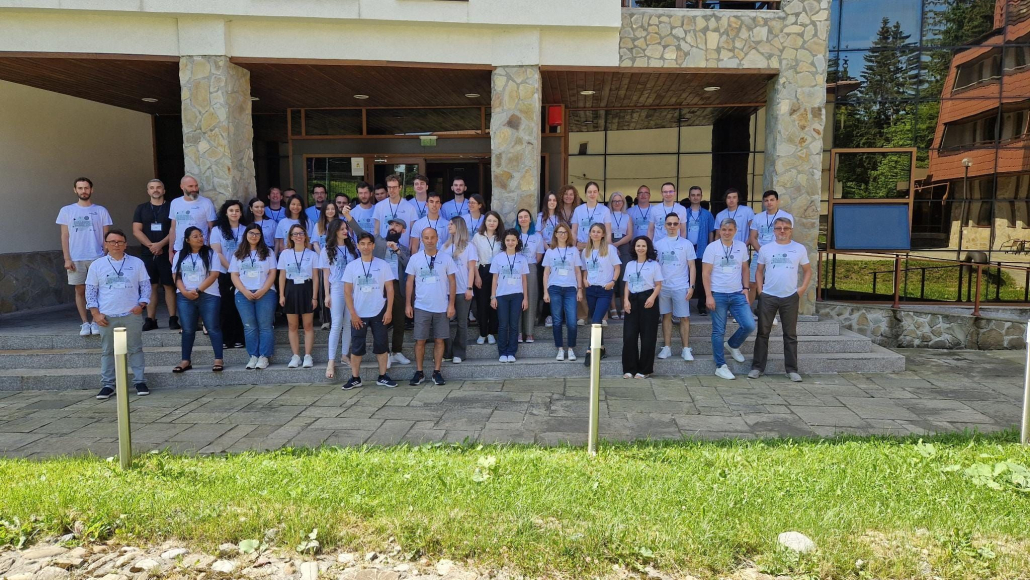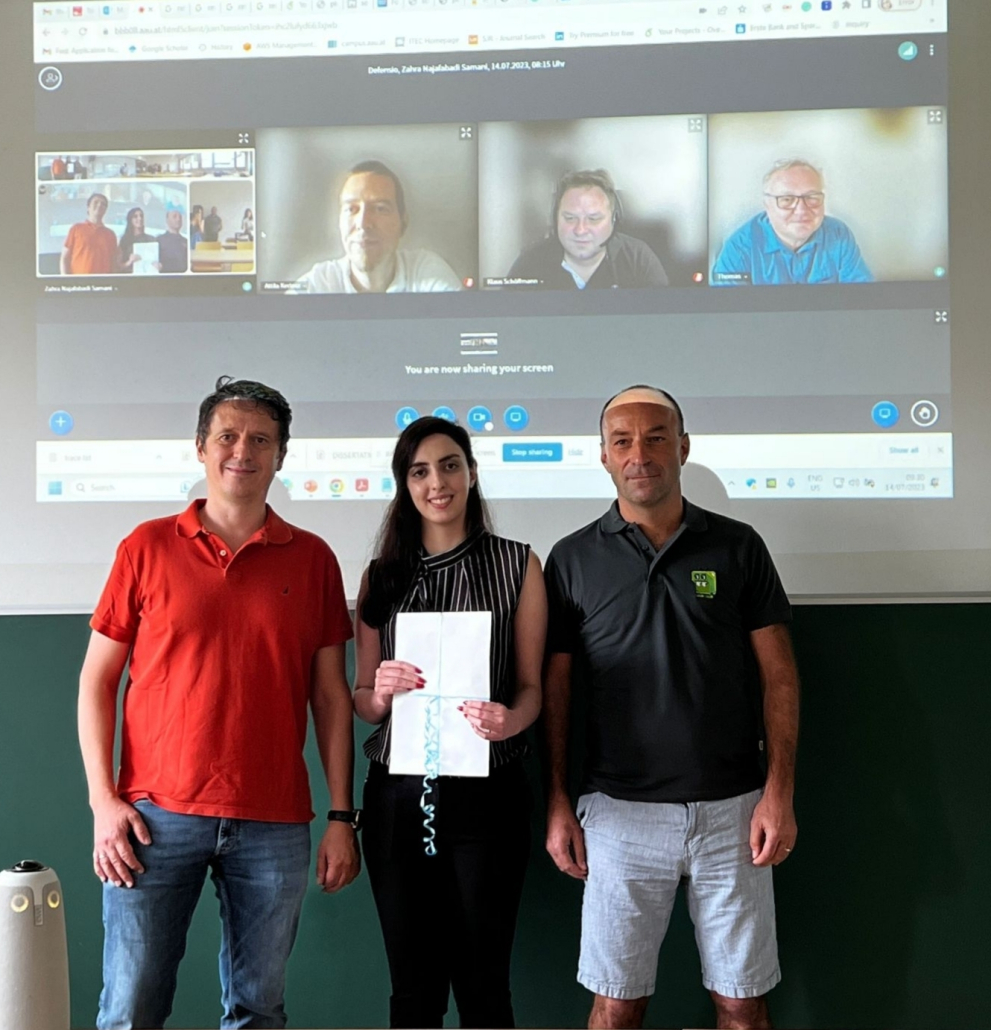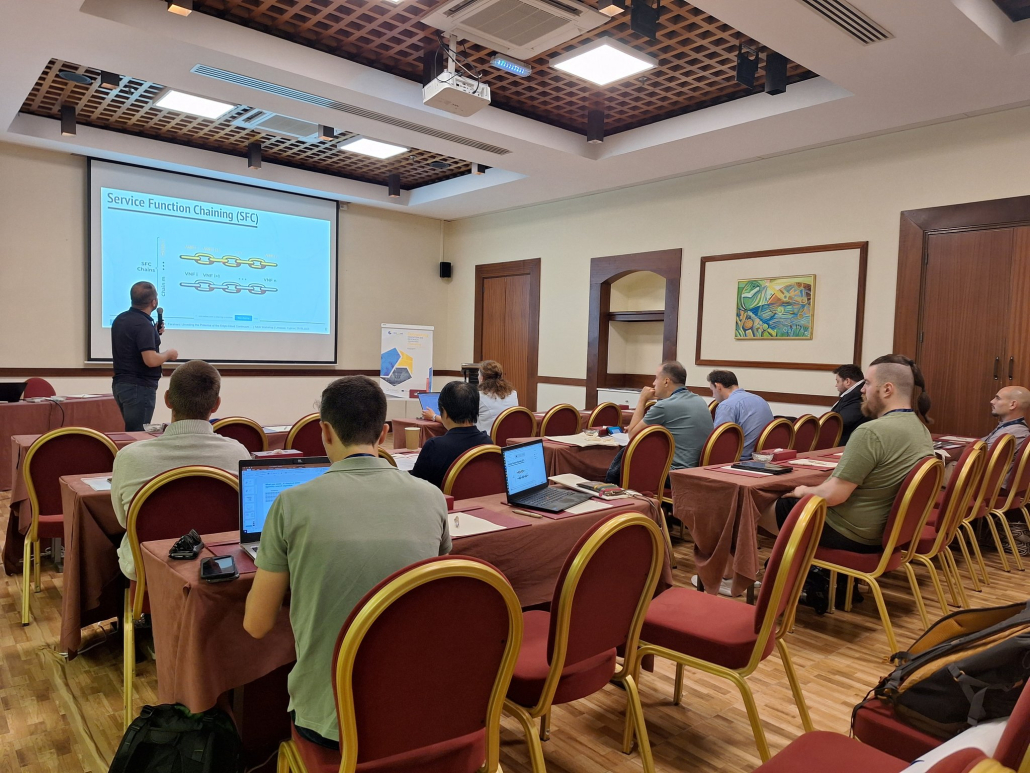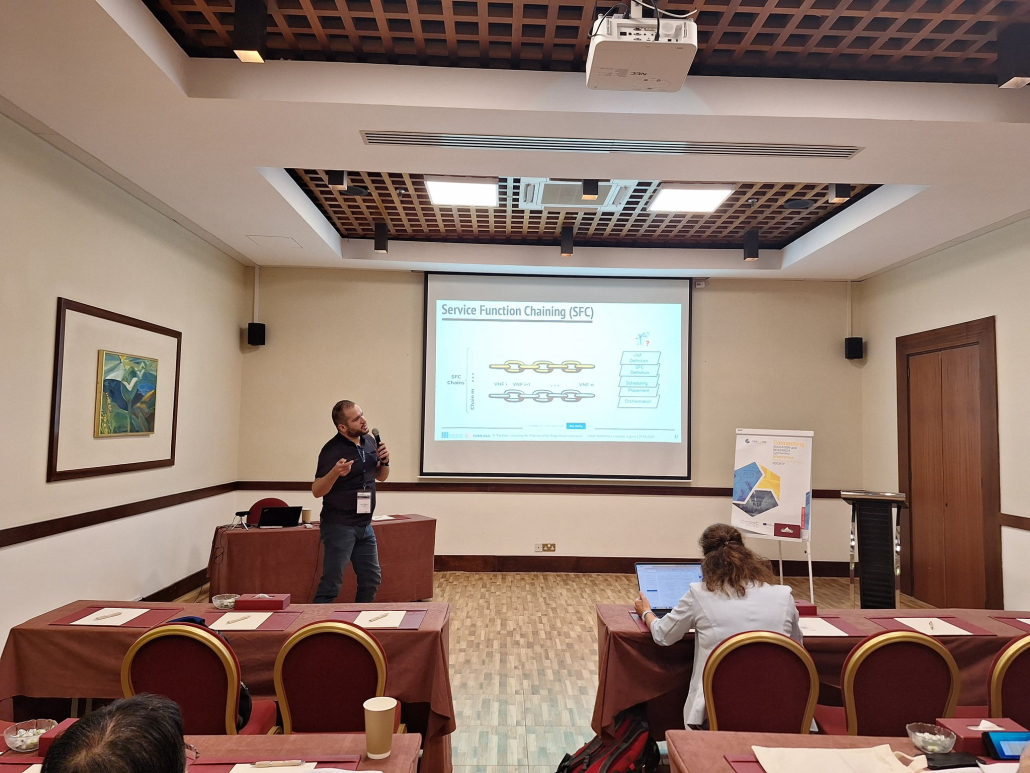Distributed and Parallel Systems

The abstract of his disseration is as follows:
Multimedia applications, mainly video streaming services, are currently the dominant source of network load worldwide. In recent VoD and live video streaming services, traditional streaming delivery techniques have been replaced by adaptive solutions based on the HTTP protocol. Current trends toward high-resolution and low-latency VoD and live video streaming pose new challenges to E2E bandwidth demand and have stringent delay requirements. To do this, video providers rely on CDNs to ensure that they provide scalable video streaming services. To support future streaming scenarios involving millions of users, it is necessary to increase the CDNs’ efficiency. It is agreed that these requirements may be satisfied by adopting emerging networking techniques to present Network Assisted Video Streaming (NAVS) methods. Motivated by this, this thesis goes one step beyond traditional pure client-based HAS algorithms by incorporating (an) in-network component(s) with a broader view of the network to present completely transparent NAVS solutions for HAS clients. Our first contribution concentrates on leveraging the capabilities of the SDN, NFV, and MEC paradigms to introduce ES-HAS and CSDN as edge- and SDN-assisted frameworks. ES-HAS and CSDN introduce VNFs named VRP servers at the edge of an SDN-enabled network to collect HAS clients’ requests and retrieve networking information. The SDN controller in these systems manages a single domain network. VRP servers perform optimization models as server/segment selection policies to serve clients’ requests with the shortest fetching time by selecting the most appropriate cache server/video segment quality or by reconstructing the requested quality through transcoding at the edge. Deployment of ES-HAS and CSDN on the cloud-based testbeds and estimation of users’ QoE using objective metrics demonstrates how clients’ requests can be served with higher QoE by 40% and lower bandwidth usage by 63% compared to state-of-the-art approaches. Our second contribution designs an architecture that simultaneously supports various types of video streaming (live and VoD), considering their versatile QoE and latency requirements. To this end, the SDN, NFV, and MEC paradigms are leveraged, and three VNFs, i.e., VPF, VCF, and VTF, are designed. We build a series of these function chains through the SFC paradigm, utilize all CDN and edge server resources, and present SARENA, an SFC-enabled architecture for adaptive video streaming applications. We equip SARENA’s SDN controller with a lightweight request scheduler and edge configurator to make it deployable in practical environments and to dynamically scale edge servers based on service requirements, respectively. Experimental results show that SARENA outperforms baseline schemes in terms of higher users’ QoE figures by 39.6%, lower E2E latency by 29.3%, and lower backhaul traffic usage by 30% for live and VoD services. Our third contribution aims to use the idle resources of edge servers and employ the capabilities of the SDN controller to establish a collaboration between edge servers in addition to collaboration between edge servers and the SDN controller. We introduce two collaborative edge-assisted frameworks named LEADER and ARARAT. LEADER utilizes sets of actions, presented in an Action Tree, formulates the problem as a central optimization model to enhance the HAS clients’ serving time, subject to the network’s and edge servers’ resource constraints, and proposes a lightweight heuristic algorithm to solve the model. ARARAT extends LEADER’s Action Tree, considers network cost in the optimization, devises multiple heuristic algorithms, and runs extensive scenarios. Evaluation results show that LEADER and ARARAT improve users’ QoE by 22%, decrease the streaming cost by 47%, and enhance network utilization by 13%, as compared to others. Our final contribution focuses on incorporating P2P networks and CDNs, utilizing NFV and edge computing techniques, and then presenting RICHTER and ALIVE as hybrid P2P-CDN frameworks. RICHTER and ALIVE particularly use HAS clients’ potential idle computational resources besides their available bandwidth to provide distributed video processing services, e.g., video transcoding and video super-resolution. Both frameworks introduce multi-layer architectures and design Action Trees that consider all feasible resources for serving clients’ requests with acceptable latency and quality. Moreover, RICHTER proposes an online learning method and ALIVE utilizes a lightweight algorithm distributed over in-network virtualized components, which are designed to play decision-maker roles in large-scale practical scenarios. Results show that RICHTER and ALIVE improve the users’ QoE by 22%, decrease cost incurred for the streaming service provider by 34%, shorten clients’ serving latency by 39%, enhance edge server energy consumption by 31%, and reduce backhaul bandwidth usage by 24% compared to the others.
An der Universität Klagenfurt wird aktuell daran geforscht, wie große Datenmengen energieeffizienter verarbeitet werden können. Die digitale Übertragung von Informationen verbrauche Energie. Wissenschafter aus zwölf Institutionen forschen an der effizienteren Verarbeitung dieser sogenannten “massive graphs”, wie es in einer Aussendung des Projektteams am Mittwoch hieß. Ziel sei unter anderem ein Energielabel für Software-Codes einzuführen.

“Das Sparpotenzial in der Verarbeitung von Daten wird noch zu wenig gesehen. Wir wollen es sichtbar machen und Lösungen anbieten”, sagte Projektleiter Radu Prodan. Im Green Supercomputing ginge es darum, die Rechenleistung effizienter zu organisieren, sodass in Summe weniger Energie verbraucht wird. Die Forscher arbeiten seit fast einem Jahr an dem Projekt “Extreme and Sustainable Graph Processing for Urgent Societal Challenges in Europe” und konnte bereits erste Ergebnisse vorweisen, die bisher auf drei Veranstaltungen in Portugal, Rumänien und in den USA präsentiert wurden.
Link: ESOCC 2023 (10th European Conference On Service-Oriented And Cloud Computing)
demonstrated by comparing cost savings achieved when data was moved between tiers versus when it remained static. The results indicate that he proposed approach has the potential to significantly reduce cloud storage cost, thereby providing valuable insights for organizations seeking to optimize their cloud storage strategies. Finally, the limitations of the proposed approach are discussed along with the potential directions for future work, particularly the use of game theory to incorporate a feedback loop to extend and improve the proposed approach accordingly.
Title: ARTICONF Decentralized Social Media Platform for Democratic Crowd Journalism
Authors: Ines Rito Lima, Vasco Filipe, Claudia Marinho, Alexandre Ulisses, Antorweep Chakravorty, Atanas Hristov, Nishant Saurabh, Zhiming Zhao, Ruyue Xin, Radu Prodan
Social Network Analysis and Mining https://www.springer.com/journal/13278
Abstract: Media production and consumption behaviors are changing in response to new technologies and demands, giving birth to a new generation of social applications. Among them, crowd journalism represents a novel way of constructing democratic and trustworthy news relying on ordinary citizens arriving at breaking news locations and capturing relevant videos using their smartphones. The ARTICONF project proposes a trustworthy, resilient, and globally sustainable toolset for developing decentralized applications (DApps) to address this need. Its goal is to overcome the privacy, trust, and autonomy-related concerns associated with proprietary social media platforms overflowed by fake news.
Leveraging the ARTICONF tools, we introduce a new DApp for crowd journalism called MOGPlay. MOGPlay collects and manages audio-visual content generated by citizens and provides a secure blockchain platform that rewards all stakeholders involved in professional news production.
Besides live streaming, MOGPlay offers a marketplace for audio-visual content trading among citizens and free journalists with an internal token ecosystem. We discuss the functionality and implementation of the MOGPlay DApp and illustrate four pilot crowd journalism live scenarios that validate the prototype.
Title: Beyond von Neumann in the Computing Continuum: Architectures, Applications, and Future Directions
Authors: Kimovski, Dragi; Saurabh, Nishant; Jansen, Matthijs; Aral, Atakan; Al-Dulaimy, Auday; Bondi, Andre; Galletta, Antonino; Papadopoulos, Alessandro; Iosup, Alexandru; Prodan, Radu
Abstract: The article discusses the emerging non-von Neumann computer architectures and their integration in the computing continuum for supporting modern distributed applications, including artificial intelligence, big data, and scientific computing. It provides a detailed summary of the available and emerging non-von Neumann architectures, which range from power-efficient single-board accelerators to quantum and neuromorphic computers. Furthermore, it explores their potential benefits for revolutionizing data processing and analysis in various societal, science, and industry fields. The paper provides a detailed analysis of the most widely used class of distributed applications and discusses the difficulties in their execution over the computing continuum, including communication, interoperability, orchestration, and sustainability issues.
Speakers: Dan Nicolae (University of Chicago, USA), Razvan Bunescu (University of North Carolina at Charlotte, USA), Anna Fensel Wageningen University & Research, the Netherlands), Radu Prodan (University of Klagenfurt, Austria), Ioan Toma (Onlim GmbH, Austria), Dumitru Roman (SINTEF / University of Oslo, Norway), Dr. Pawel Gasiorowski (Sofia University – GATE Institute, Bulgaria, and London Metropolitan University – Cyber Security Research Centre, UK), Jože Rožanec (Qlector, Slovenia), Nikolay Nikolov (SINTEF AS, Norway), Viktor Sowinski-Mydlarz (London Metropolitan University, UK and GATE Institute, Bulgaria), Brian Elvesæter (SINTEF AS, Norway)
Summer school organized by Academia de Studii Economice din București, in collaboration with the GATE Institute at Sofia University St. Kliment Ohridski and the projects DataCloud, enRichMyData, Graph-Massivizer Project, UPCAST Project, and InterTwino.

Organizing team: Dan Nicolae, Razvan Bunescu, Dumitru Roman, Sylvia Ilieva, Ahmet Soylu, Raluca C., Iva Krasteva, Irena Pavlova, Cosmin PROȘCANU, Miruna Proșcanu, Anca Bogdan, Georgescu (Cretan) Georgiana Camelia, Dessislava Petrova-Antonova, Orlin Kouzov. Vasile Alecsandru Strat, Adriana AnaMaria Alexandru(Davidescu) Miruna Mazurencu Marinescu Pele Daniel Traian Pele Liviu-Adrian Cotfas Cristina-Rodica Boboc Oana Geman Alina Petrescu-Nita Ovidiu-Aurel Ghiuta Codruta Mare
 On 14.07.2023, Zahra Najafabadi Samani successfully defended her doctoral studies with the thesis on the title: “Resource-Aware Time-Critical Application Placement in the Computing Continuum” under the supervision of Prof. Radu Prodan and Assoc.-Prof. Dr. Klaus Schöffmann at ITEC. Her defense was chaired by Univ.-Prof. Dr. Christian Timmerer and examined by Univ.-Prof. Dr. Thomas Fahringer (Leopold Franzens-Universität Innsbruck, AT) and Assoc.-Prof. Dr. Attila Kertesz (University of Szeged, HU).
On 14.07.2023, Zahra Najafabadi Samani successfully defended her doctoral studies with the thesis on the title: “Resource-Aware Time-Critical Application Placement in the Computing Continuum” under the supervision of Prof. Radu Prodan and Assoc.-Prof. Dr. Klaus Schöffmann at ITEC. Her defense was chaired by Univ.-Prof. Dr. Christian Timmerer and examined by Univ.-Prof. Dr. Thomas Fahringer (Leopold Franzens-Universität Innsbruck, AT) and Assoc.-Prof. Dr. Attila Kertesz (University of Szeged, HU).The abstract of her disseration is as follows:
Authors: Juanjuan Li, Rui Qin, Cristina Olaverri-Monreal, Radu Prodan, Fei-Yue Wang
Journal: IEEE Transactions on Intelligent Vehicles
Abstract: As part of TIV’s DHW on Vehicle 5.0, this letter introduces a novel concept, Logistics 5.0, to address high complexities in logistics CyberPhysical-Social Systems (CPSS). Building upon the theory of parallel intelligence and leveraging advanced technologies and methods such as blockchain, scenarios engineering, Decentralized Autonomous Organizations and Operations (DAOs), Logistics 5.0 promises to accelerate the paradigm shift towards intelligent and sustainable logistics. First, the parallel logistic framework is proposed, and the logistics ecosystem is discussed. Then, the human-oriented operating systems (HOOS) are suggested to providing intelligent Logistics 5.0 solutions. Logistics 5.0 serves as a critical catalyst in realizing the “6S” objectives, i.e. Safety, Security, Sustainability, Sensitivity, Service, and Smartness, within the logistics industry
Title: A distributed and energy-efficient KNN for EEG classification with dynamic money-saving policy in heterogeneous clusters
Authors: Juan José Escobar, Francisco Rodríguez, Beatriz Prieto, Dragi Kimovski, Andrés Ortiz, and Miguel Damas
Abstract: Due to energy consumption’s increasing importance in recent years, energy-time efficiency is a highly relevant objective to address in High-Performance Computing (HPC) systems, where cost significantly impacts the tasks executed. Among these tasks, classification problems are considered due to their great computational complexity, which is sometimes aggravated when processing high-dimensional datasets. In addition, implementing efficient applications for high-performance systems is not an easy task since hardware must be considered to maximize performance, especially on heterogeneous platforms with multi-core CPUs. Thus, this article proposes an efficient distributed K-Nearest Neighbors (KNN) for Electroencephalogram (EEG) classification that uses minimum Redundancy Maximum Relevance (mRMR) as a feature selection technique to reduce the dimensionality of the dataset. The approach implements an energy policy that can stop or resume the execution of the program based on the cost per Megawatt. Since the procedure is based on the master-worker scheme, the performance of three different workload distributions is also analyzed to identify which one is more suitable according to the experimental conditions. The proposed approach outperforms the classification results obtained by previous works that use the same dataset. It achieves a speedup of 74.53 when running on a multi-node heterogeneous cluster, consuming only 13.38% of the energy consumed by the sequential version. Moreover, the results show that financial costs can be reduced when energy policy is activated and the importance of developing efficient methods, proving that energy-aware computing is necessary for sustainable computing.






